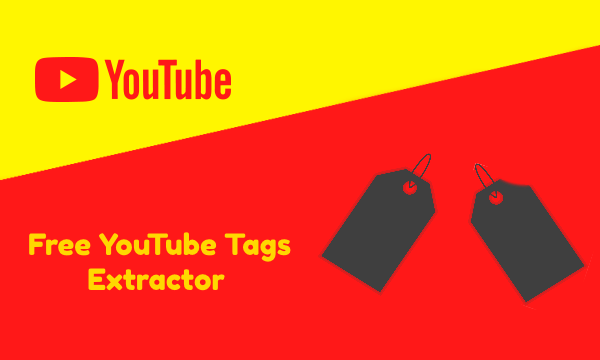Finding small YouTube channels can be rewarding for viewers and creators alike. Small channels often offer fresh, unique content and more personal engagement compared to bigger creators.
Whether you’re looking to support emerging talent, discover niche topics, or connect with a growing community, knowing how to identify these smaller channels is key.
This guide will explore effective methods like using specific keyword searches, channel finder tools, exploring live streams, and checking community tabs. With the right strategies, you can easily uncover hidden gems on YouTube.
What Is a Small YouTube Channel?
Defining a “small” YouTube channel can vary, but generally, it’s based on subscriber count, views, and engagement.
Typically, a small channel has less than 10,000 subscribers, fewer than 1 million total views, and averages around 500 views per video.
Another important factor is audience engagement—channels with fewer than 100 comments per video usually have a smaller, less active user base.
Channels with 10K to 50K subscribers and higher views are considered medium-sized. These numbers aren’t strict but help give a general idea of channel size.
How Many Subscribers Is a Small Channel?
A small YouTube channel typically has fewer than 10,000 subscribers. Channels with less than 1,000 subscribers are often called “micro” or “new” channels, while those between 1,000 and 10,000 subscribers are small but usually have some consistent audience and content history. Between 10,000 and 50,000 subscribers is considered medium-sized.
These ranges aren’t official but help creators and viewers understand where a channel stands in terms of growth and reach. Subscriber count is one key way to define size, but engagement and views also matter.
Search Long Tail Keywords
If you want to find small YouTube channels, you need to consider what kind of content those small YouTube channels publish. According to Ahrefs, short-tail keywords usually have a high search volume with high difficulty, which is why large YouTubers create videos on them. These big channels already have a large fan following and many subscribers, so they often rank easily.
On the other hand, long-tail keywords have lower search volumes, and small YouTubers often create content around these keywords. Therefore, if you’re trying to find small YouTube channels, search using long-tail keywords related to the niche you’re interested in.
Long-tail keywords are more descriptive and have a clear intent.
For example:
“How to travel to India from the USA”
Short-tail keywords are usually very broad and less specific in intent.
For example:
“Travel India”
Use Search YouTube Channels Tool
You can also use a YouTube channel finder tool to easily find small YouTube channels from any country. By using these tools, you can discover small YouTubers even according to your niche.
For example, open a YouTube channel finder tool.
- Enter the keyword related to the niche in which you want to find small YouTube channels.
- Then, select the country — the one from which you want to find small channels.
- After that, set the subscriber range, for example, the minimum and maximum number of subscribers you want the channels to have
The tool will then show you channels that match your given data.
Discover Small Creators While They’re Live:
One great way to find small YouTubers is by tuning into live streams. When a creator is live, their content often gets more visibility in the live section or through notifications. This gives smaller channels a chance to reach new viewers in real-time.
Browsing live videos in your niche can help you spot emerging creators before they grow big. Plus, interacting during live streams can build a stronger connection and support for these creators, making it a win-win discovery method.
Check Community Tabs and Social Media
Often, YouTubers promote small YouTube channels through their community tab or social media platforms like Instagram, Twitter (X), and Facebook. When a YouTuber likes a new channel or finds their content valuable, they share the link with their followers.
You can check their community tabs, where you might find mentions of smaller channels. Similarly, by visiting their social media profiles, you can see which channels they are supporting — this is also a great way to discover small YouTubers.
Browse Related Channels
When you visit a medium or large YouTube channel, you’ll often find a “related channels” section on their homepage. YouTube’s algorithm usually recommends channels from the same niche, and many of these include smaller creators.
You can explore these related channels, watch their content, and check their size to see if they qualify as small YouTubers.
This method is especially helpful when you’re looking for small YouTube channels within a specific topic or niche, as the recommendations are often highly relevant and based on similar content.
Dive into Playlists
Exploring playlists is another smart way to discover small YouTube channels. Many users and small creators create playlists that include videos from a variety of channels, often from within the same niche or topic.
These playlists are sometimes overlooked, but they can be goldmines for finding lesser-known creators.
When you find a playlist that aligns with your interests, take a look at all the channels featured in it. There’s a good chance you’ll come across small YouTubers who are producing quality content but haven’t yet gone mainstream.
Participate in YouTube Forums and Groups
Joining forums and social media groups focused on YouTube creators and fans is a great way to discover small channels.
These communities—found on platforms like Reddit, Facebook, and Discord—are full of people who regularly share content, give feedback, and promote their favorite lesser-known creators. By actively engaging in these groups, asking for recommendations, or simply observing the conversations, you can come across many hidden gems. It’s also a great place to connect with other creators, learn new strategies, and stay updated with trends in your niche.
Do Small YouTube Channels Make Money?
Yes, small YouTube channels can make money, but earnings vary widely.
A beginner channel with around 1,000 subscribers might earn between $30 to $300 per month from AdSense, depending on views and engagement. Channels with about 100,000 monthly views can expect to make $1,000 to $3,000 per month.
As channels grow, income increases; reaching 1 million subscribers often leads to earnings of $10,000 or more per month. However, income depends on factors like niche, viewer location, and monetization strategies beyond ads.
Who is the lowest YouTuber on YouTube?
Some YouTube channels have extremely low subscriber counts, sometimes as few as one or two subscribers. For example, channels like “Cats Videos” have only 1 subscriber, “The Most Boring Channel” has 2 subscribers, and “Lost in Strange Things” has 3 subscribers.
These channels highlight how vast YouTube is, with many creators just starting out or inactive, resulting in very few followers. While they have the least subscribers, they still exist as part of YouTube’s diverse content ecosystem.
How To Grow Your Youtbe Channel
To grow your YouTube channel, focus on creating high-quality, engaging content that appeals to your target audience.
Consistency is key—upload videos regularly and optimize titles, descriptions, and thumbnails for better search visibility. Be sure to add relevant YouTube video tags to improve discoverability, and consider using a YT tag generator to generate trending and related tags.
Engage with your viewers through comments and community posts to build loyalty. Promote your videos on social media and collaborate with other creators. Analyze your channel analytics to understand what works and improve continuously for steady growth.
Conclusion
Discovering small YouTube channels allows you to support emerging creators and enjoy unique, niche content. By using targeted search strategies, tools, and exploring community features, you can uncover many hidden gems that might otherwise go unnoticed.
Engaging with these channels not only helps them grow but also builds a closer, more interactive viewer community. Whether you’re a viewer or creator, focusing on smaller channels offers fresh perspectives and opportunities for meaningful connections within the YouTube ecosystem.




